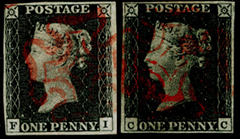 First Issues Collectors Club
of stamps and philatelic material
First Issues Collectors Club
of stamps and philatelic material
Home - Catalog - Categories - Index - Journal - Exhibits - Auctions - Forgeries - Join
 First Issues Collectors Club
of stamps and philatelic material
First Issues Collectors Club
of stamps and philatelic material
Home - Catalog - Categories - Index - Journal - Exhibits - Auctions - Forgeries - Join
| first issues > countries > korea |
↓ - South Korea - North Korea
| Asia | 8, a-b |
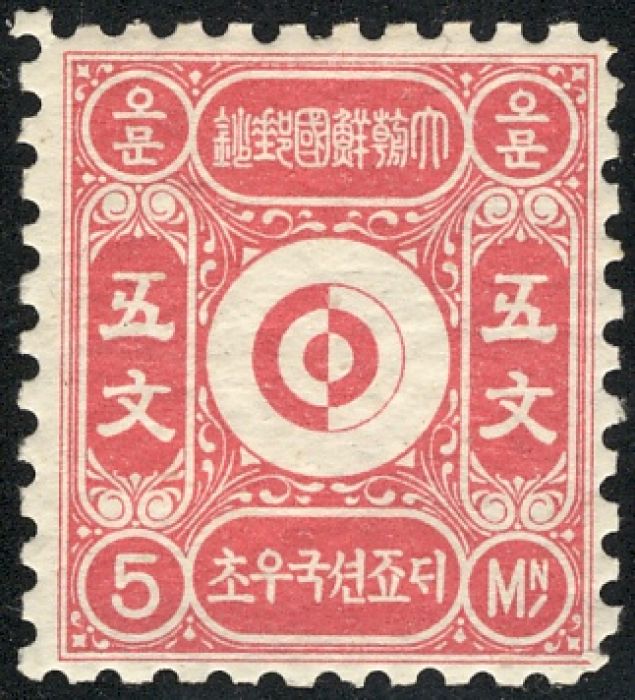 |
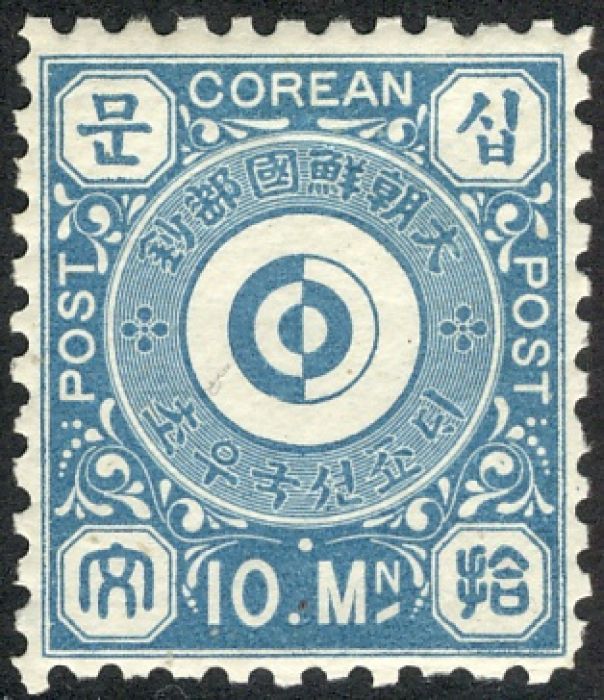 |
||
| Korea #1 | #2 | xxx |
Perforated 8½ to 11½, no watermark, typographed.
| Description | # issued | Scott | SG | Mi | Y&T |
|---|---|---|---|---|---|
5 mon rose |
500,000 | 1 | 1 | 1 | |
10 mon blue |
1,000,000 | 2 | 2 | 2 | |
The following were not placed in use |
|||||
25 mon orange |
500,000 | (3) | 3 | ||
50 mon green |
500,000 | (4) | 4 | ||
100 mon dark blue |
300,000 | (5) | 5 | ||
All issue quantities are approximate.
Reprints and counterfeits exist.
The Scott 2002 Classic catalog states that the value of the unissued stamps are in poon, but images of the stamps show the value as mon.
Historically, from 1635, following a military defeat, Korea owed suzerainty to China. Gibbons [1] describes it as a "hermit kingdom, till in 1876 it was forced to open diplomatic relations with Japan".
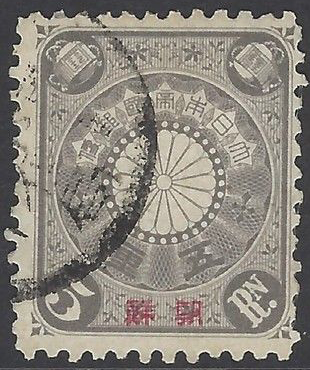 |
Japanese offices in Korea |
| 1900 † Sc1 SG1 |
The first stamp was issued in November 1884 and in the December of that year there was an attempted revolt during which the Post Office at Seoul was burned down and the Minister of Posts was killed: stamps were not used again until 1895. Gibbons notes that "genuinely used stamps are therefore very rare"; the catalogue price for the #1 used are not given in Scott [2, 2008] or Yvert & Tellier [3, 2010] but Gibbons [1, 1997] shows £34 mint, £4,000 used.
In 1883, Chinese Post Offices were opened in Korea, usage being identified by cancellation. Japanese Post Offices were opened from 1876 using Japanese stamps but currency fluctuations required the stamps to be overprinted in 1900. The following year, with Japanese currency being used increasingly, the overprinted stamps were withdrawn. In April 1905, Japan took control of the Korean postal service and in August 1910 Japan annexed the country and it became a Japanese colony using Japanese stamps until 1945.
† Scott lists these under Japan, Gibbons under Korea.
 |
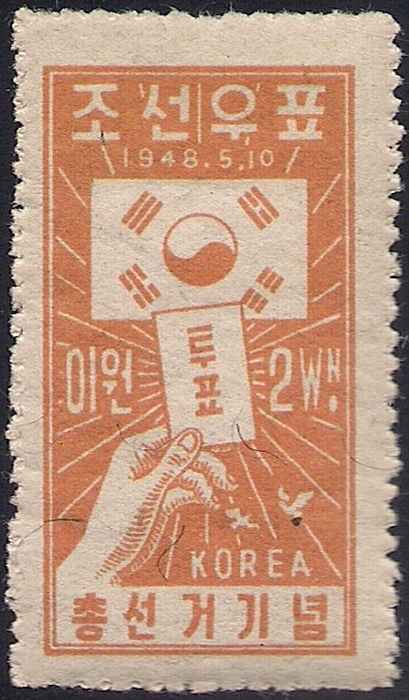 |
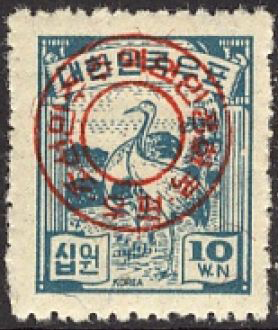 |
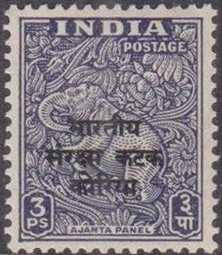 |
US military govt. |
Republic of Korea |
North Korean Occupation |
Indian Custodian Forces |
| 1946 Sc55 SG69 | 1948 Sc80 SG95 | 1950 Sc SG1 | 1953 India Sc-M44 Korea SG-K1 |
Summarising Gibbons [1], US troops landed in Korea in September 1945 and set up a military govt. of Korea south of the 38th Parallel. The stamps of Japan were used until June 1946. Gibbons has sections of US military govt. (starting with Sc55 SG69) and the Republic of Korea from 1948 (starting with SG106), but Scott starts the Republic earlier with Sc80, SG95.
North Korean forces invaded South Korea in June 1950 but were driven out in July by UN forces. Three South Korean stamps were issued in the occupied are, overprinted (in Korean) "Democratic People's Republic of Korea". After the troops were withdrawn, stamps were issued locally with a small change to the overprint to make it read "Korean People's Inferior Republic Postage Stamp".
Overprinted Indian stamps were issued for use by the Indian contingent of the UN force.
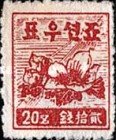 |
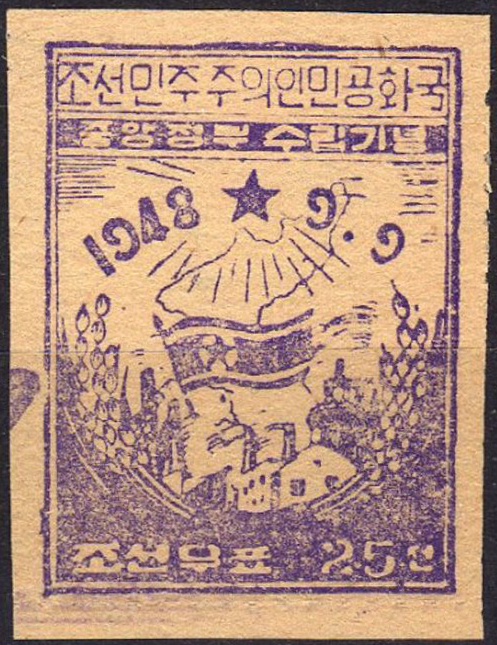 |
Russian occupation |
Korean People's Democratic Repubic |
| 1946 Sc1 SG-N1 | 1948 Sc14 SG-N16 |
Summarising Gibbons [1] again, Russia declared war on Japan in August 1945 and invaded northern Korea, occupying territory north of the 38th Parallel. A provisional govt. was set up in February 1946, and Japanese stamps were used until that time. The People's Democratic Republic was declared in September 1948 and Russian troops left by the end of the year.
Visit the Korea Stamp Society for more information and images
and here is James Grayson's APS program on Korea.